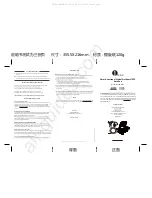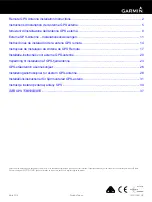
45
Section 4
Cell Phone
Reference
Programming Security to Lock the Phone and
Selected Features
Lock Phone—
To prevent unauthorized use of your
phone, you can lock it so that before you use it again you
must enter a lock password.
Auto Lock—
To prevent unauthorized use of your
phone, you can set it to lock each time it is powered up
and the lock password or security password must be
entered before the phone can be used. This setting, when
checked, also allows ‘Quick Lock’ of the phone by using
the ‘Lock Phone’ button on this page or by holding the
Menu key from any page. When using ‘Quick Lock’ no
password is required to lock the phone.
Call Blocking—
When you enable this feature you
can choose to exclude calls from these sources: All
Incoming, All Outgoing, Less than 11 Digits, 1 Prefix and
011 Prefix.
About Passwords:
The NavTalk Pilot employs two types of passwords
(actually number codes are created using the phone keypad
to spell words) to secure use of the unit and its stored data.
It can be programmed so that a
Lock Password
can be
used to Lock or Unlock the Phone.
Stored Setup data and the Lock Password are
protected by a
Security Password
. It secures settings
such as Calling Card PIN, Auto Lock, Call Blocking, NAM
Selection, Emergency Number, Remote Command and
Scanning features. The Security Password can also be
used to Lock or Unlock the phone.
NavTalk Pilot features that can be security protected
are accompanied by a padlock icon. The icon is closed by
default on each power cycle and can be opened by
highlighting and entering the Security Password.
Each password is provided with a default:
Lock Password = 1234
Security Password = 1234567
‘Locked Phone’ Displays
after power ON. Enter
Lock or Security
Password to Unlock.
Password Programming
Page for Lock Password
Setup Menu Security
Directory
















































